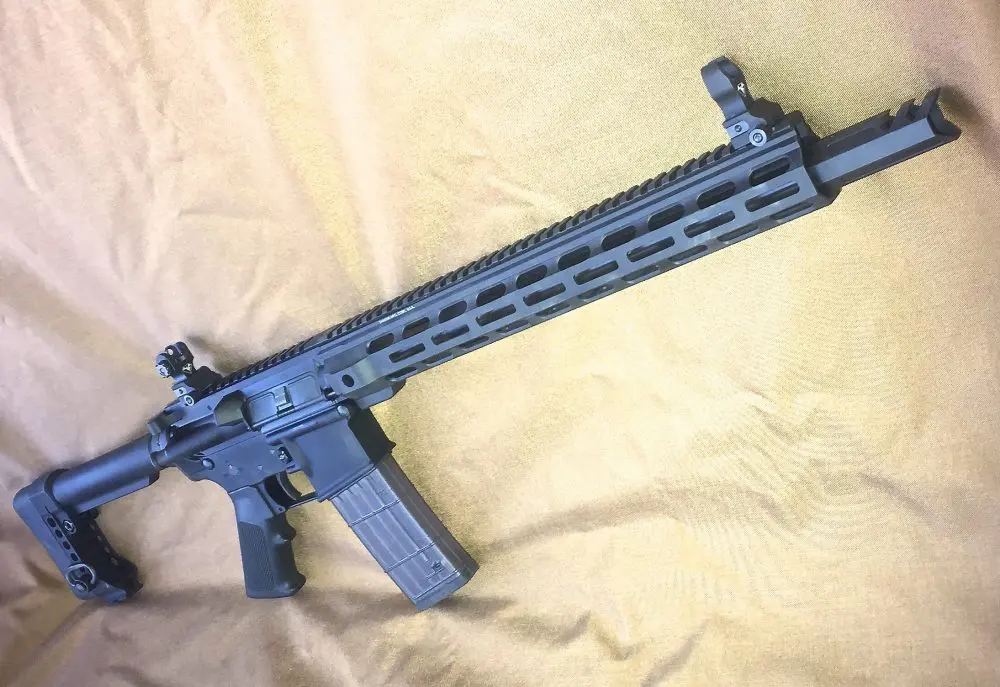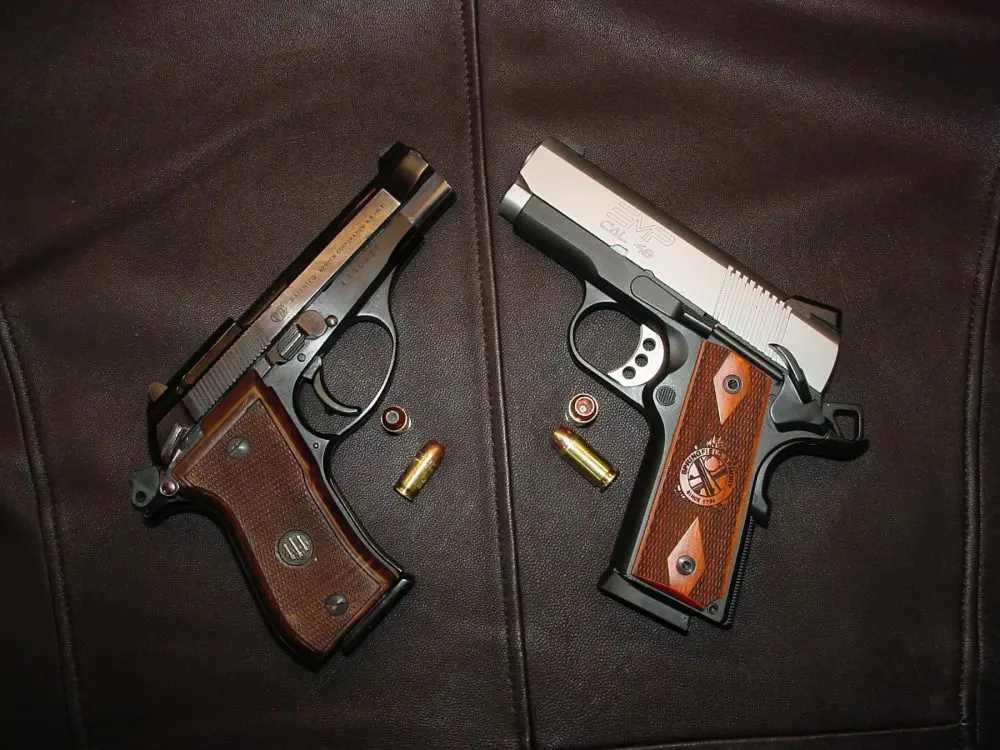

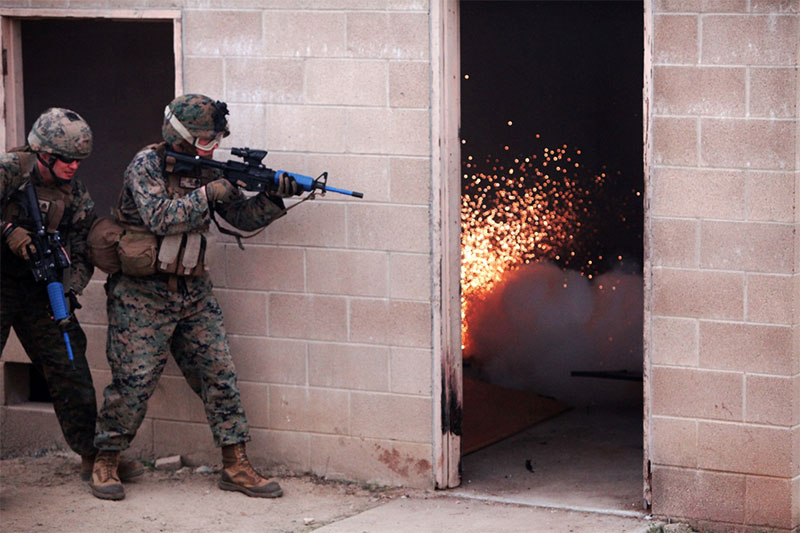



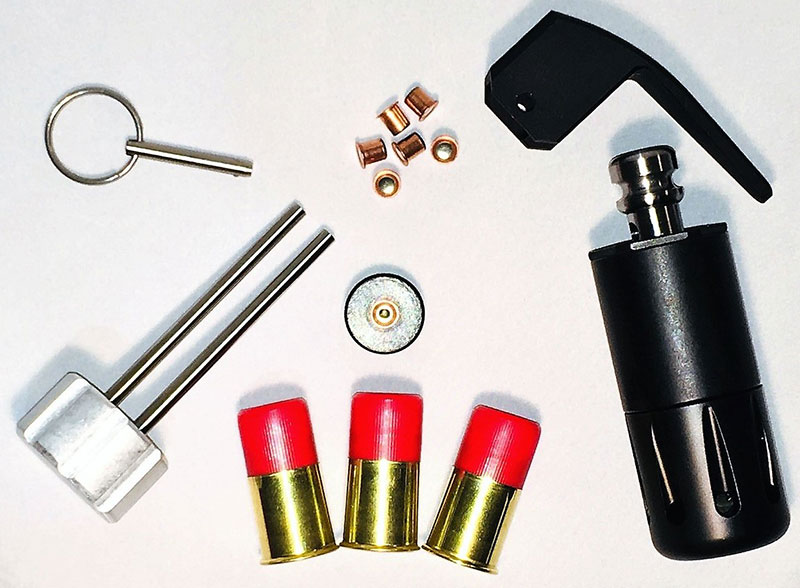




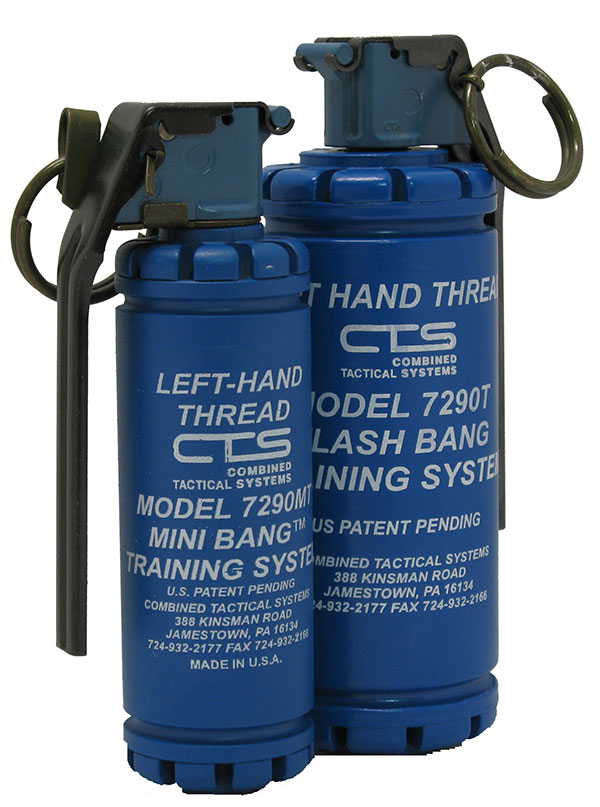
The noise flash diversionary device (NFDD), also commonly referred to as a flash sound diversionary device (FSDD), diversionary device, Distraction Device®, flash grenade, or flashbang, is an essential tool of the trade for tactical teams. NFDDs produce dramatic pyrotechnics that are intended to provide a brief distraction without causing permanent injury. Although often used generically, the term “Distraction Device” is a registered trademark of Safariland® /Defense Technology®.
Table of Contents
HISTORY OF THE NFDD
The world’s first grenades appeared in the Eastern Roman (Byzantine) Empire shortly after the reign of Leo III (AD 717-741). Made of clay and later glass, they were incendiary grenades that employed Greek fire. The first explosive grenades may be traced back to China during the Song Dynasty (AD 960–1279), when soldiers packed gunpowder into ceramic or metal containers.
Explosives were known in Japan from the time of the Mongol Invasions in the 13th century. The ninja of feudal Japan are said to have used flash bombs to blind and distract their enemies. It was not until the 17th century that explosive grenades appeared in Europe.
The British Special Air Service (SAS) is credited with the development of the first modern NFDD in the early 1970s and the development and refinement of tactics for their employment. The SAS subsequently trained Special Operations Forces (SOF) in the U.S. and several allied countries in the use of NFDDs for Counter Terrorist (CT) operations.
The first documented operational use of an NFDD was by Israeli commandos during Operation Thunderbolt to rescue passengers of a hijacked Air France jetliner at Entebbe, Uganda on 3 July 1976. Operation Thunderbolt is retroactively known in Israel as Mivtsa Yonatan (Hebrew for Operation Jonathan) in honor of Lt. Col. Yonatan Netanyahu, leader of the ground assault unit who was killed in action during the raid.
U.S. law enforcement agencies adopted NFDDs from the military. The Los Angeles Police Department D Platoon (SWAT) was one of the first U.S. law enforcement tactical teams to employ NFDDs. The LAPD®’s first flashbang was an M116A1 Modified Hand Grenade Simulator that had its charge reduced by the LAPD Bomb Squad. Today it would be difficult, if not impossible, to find a tactical team anywhere in the country that does not have NFDDs in its tactical toolbox.
LIFESAVER OR LIABILITY?
When properly employed, NFDDs are reasonably safe. When improperly employed, they have the potential to cause serious bodily injuries and property damage. Although NFDDs have proven to be of extremely low lethality over many years of tactical use, several deaths have been attributed to their use.
THE COURTS
Court cases have shown that a sound legally defensible policy and proper training are key to the safe and effective employment of NFDDs. Most of the injuries that occur are the direct result of operator error, which can almost always be linked to a failure in training. Training not only saves lives, but it’s also your first line of defense in court.
A municipality may be held liable for a violation of rights that results from a failure to adequately train its employees if that failure represents a deliberate indifference on the part of the municipal policy.
TRAINING OPTIONS
“Train as you fight, fight as you train.” Every reader has undoubtedly heard that phrase. Although there certainly isn’t anything that compares to reality, reality cannot be replicated in a training environment. As such, the goal in training must be realistic simulation. For training to be meaningful, it must be as close to reality as possible. This training concept is often referred to as reality-based training.
In the past, options were limited when it came to NFDD training. Standard NFDDs are expensive and impose restrictions on the training environment. This led to many agencies employing expended flashbangs that were painted or taped blue for recognition during training.
Responding to the needs of tactical teams, manufacturers have developed training devices to realistically simulate the characteristics of standard NFDDs. NFDD training devices fall into three categories: inert, pyrotechnic, and non-pyrotechnic. They replicate to varying degrees the handling characteristics of standard NFDDs without the cost, blast, and regulatory requirements.
INERT TRAINING DEVICES
In the inert category, Ring’s Manufacturing, originator of BLUEGUNS® firearms simulators, makes three BLUEGUNS flashbang simulators—the FSFBCTS Flash Bang CTS-7290; FSFBDT Flash Bang Def Tec No. 25; and M84 Stun Grenade. Ring’s also makes an FSBBG Base Ball Grenade that’s designed to replicate the military M67 fragmentation grenade, but can also be employed to simulate a sting-ball grenade, and a M18 Smoke Grenade replica.
Ring’s BLUEGUNS products are made with strong, impact-resistant polyurethane with metal reinforcement. The flashbang and grenade simulators are inexpensive and last practically forever. They have a functioning pull pin, but obviously lack any “bang.”
PYROTECHNIC TRAINING DEVICES
Pyrotechnic NFDD training devices that are presently available in the U.S. fall into two categories—traditional fuzed and blank-firing impact grenades (BFIG). BFIGs are a relatively recent innovation. They contain a mechanism designed to fire a blank cartridge when the device is deployed from a height of about one meter onto a hard surface.
Blank-firing grenades (BFG) that work on a time delay are available in Europe. There have been safety issues with some of these as a result of wildly inconsistent time delays, including no delay. At one time a BFG was available in the U.S. that utilized special .357 blanks with a pyrotechnic delay, but these are no longer in production, to the best of my knowledge.
Most pyrotechnic training flashbangs are of the fuzed variety. They typically employ a special M201A1 fuze that produces between 110 and 130 dB report at five feet (1.5 m). The training fuzes are roughly half the cost of standard flashbangs, typically running about $15, plus the necessary HazMat fee for shipping. The bodies may be used an unlimited number of times. The only recurring costs are for the training fuzes.
The most widely employed fuzed training flashbang systems are the AMTECH Less-Lethal Systems (ALS) ALSDDTS Diversionary Device Training System, Combined Systems (CTS) Model 7290T and 7290MT Flash-Bang Training Systems, and Safariland/Defense Technology Low Roll™ Distraction Device® Training Body and Training Fuzes.
Except for the special fuze and blue color, the fuzed training flashbangs by ALS, CTS, and Defense Technology are identical in appearance and weight to the companies’ standard flashbangs that they’re designed to replicate. This makes them very popular with agencies that employ those companies’ less-lethal products.
Popular in Europe, Blank Firing Impact Grenades are beginning to make their presence felt in the U.S. tactical community. Two such devices are the ALS TRMR-LE Training Device and Royal Arms International FBG-Mk III NFDD Flash Bang Trainer.
The ALS TRMR-LE Training Device has a body that can be reloaded up to 250 times with the ALS1208 12-gauge Bore Thunder cartridge. The body of the TRMR-LE incorporates a safety button that must be engaged to twist the top section to arm, which functions similarly to a standard firearm safety. Upon deployment, the device’s kinetic energy causes the wobble top to move and drive the firing pin into the primer of the cartridge. The TRMR-LE has been safety tested to withstand a 10-foot drop (in the safe position).
After deployment, the base is removed to expel the spent cartridge, reloaded, and reassembled for the next use. Bore Thunder cartridges produce approximately 172 dB at five feet. The TRMR-LE can be configured as an irritant/marking powder dispersal system using a .68-caliber ball, such as a PepperBall from United Tactical Systems (UTS). The TRMR-LE is available in a range of colors (including training blue) to suit different mission profiles.
Royal Arms International’s FBG-Mk III NFDD Flash Bang Trainer is based on the company’s FBG-Mk II, with a number of enhancements. The FBG-MK III has a reloadable body designed to be used with Royal Arms 12-gauge FBC Flash Bang Cartridges or standard 209 shotshell primers using the included adapter. The FBG-Mk III is hand deployed in the same manner as a traditional flashbang.
The FBG-Mk III incorporates a pull ring and spoon (“fuze” handle) for safety. It also employs a wobble top that utilizes the kinetic energy from impact to drive the firing pin into the primer. According to Royal Arms, the FBG-Mk III may be reloaded an unlimited number of times. The FBG-Mk III is available only in black.
The FBC Flash Bang Cartridges produce 175 dB at five feet. The 209 primers produce 118 dB at five feet and are definitely the most cost-effective way to conduct NFDD training, running only around five cents each.
NON-PYROTECHNIC TRAINING DEVICES
Most of the non-pyrotechnic devices on the market were originally developed for Airsoft and paintball. While some of these do work well for training, I recommend going with a training system/device that was specifically developed for tactical training, such as the Defense Technology Low Roll Training Simulator. This is a reloadable pneumatic simulator that provides a cost-effective way to introduce operators to the company’s Low Roll Distraction Device® models. The Low Roll Training Simulator is similar to the company’s Low Roll Distraction Device models in size, weight, delay time, and deployment procedures, but has a blue body to distinguish it as a training device.
The Low Roll Training Simulator has a pneumatic fuze and does not produce any flame, spark, light, heat, or damage to the deployment environment. It produces 130 dB at five feet. It is sold in a complete starter kit containing two bodies, a filling station, end caps, pull rings, and replacement fuze handles.
Due to the nature of gases (Ideal Gas Law), pneumatic flashbang simulators have temperature-dependent performance to varying degrees. Some can be unreliable, especially in cold weather. Per-use costs typically run between $2.50 and $5.00, depending on the device.
HEARING SAFE
All pyrotechnic and non-pyrotechnic devices mentioned here are loud enough for effective training but (except for the use of the ALS1208 12-gauge Bore Thunder cartridges and 12-gauge FBC Flash Bang Cartridges) not so loud as to mandate hearing protection. This makes them ideal for role-playing scenario-based/force-on-force training. Another big plus is that training can be conducted in more locations than would be possible with a higher dB output.
CONCLUSION
Realistic NFDD training has never been more affordable. Today’s NFDD training options allow teams to train more often, in more places, and with much greater safety than in the past.
SOURCES
AMTECH LESS-LETHAL SYSTEMS, INC.
(870) 445-8746
www.lesslethal.com
COMBINED SYSTEMS, INC.
(724) 932-2177
www.combinedsystems.com
RING’S MANUFACTURING, INC.
(321) 951-0407
www.blueguns.com
ROYAL ARMS INTERNATIONAL, INC.
(888) 876-9251
www.royalarms.com
SAFARILAND GROUP / DEFENSE TECHNOLOGY
(904) 741-5400
www.defense-technology.com
TFTT DIRECT ACTION GROUP
(714) 206-5168
http://dag-usa.com
UNITED TACTICAL SYSTEMS, LLC
(877) 887-3773
www.pepperball.com


